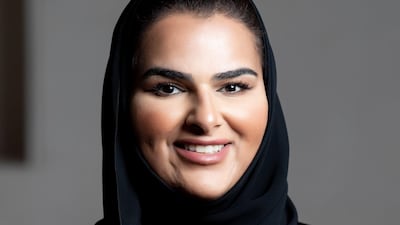Salama Al Shamsi has been appointed as the director of Qasr Al Hosn, which opens December 7 on Abu Dhabi island.
Qasr Al Hosn is the oldest standing structure in the emirate of Abu Dhabi. Formerly a watch tower for the nascent community on the island, it became a palace for the royal family under the rule of Sheikh Shakhbut bin Sultan Al Nahyan in the early 1940s. It reopens next month as a museum commemorating the history of the structure and city’s development around it.
The entire city block around the fort is being redeveloped, with a House of Artisans and a building commemorating the National Consultative Council, both of which will also be under Al Shamsi’s directorship. The Culture Foundation, which was established by Sheikh Zayed and which was an important community site in the 1980s and 1990s, will also reopen after ten years.
"We are delighted to introduce Salama Nasser Al Shamsi as Qasr Al Hosn Director," said Mohamed Khalifa Al Mubarak, Chairman of the Department of Culture and Tourism - Abu Dhabi in a press announcement. "Salama has been a valued member of the DCT Abu Dhabi team for many years. Since joining the Qasr Al Hosn project, she has been instrumental in driving it forward and realising our vision for the monument."
Al Shamsi joined DCT Abu Dhabi in 2009 and was the former senior project manager of the Zayed National Museum. She has already been on the Qasr Al Hosn team within DCT Abu Dhabi and will have the Qasr Al Hosn fort, the National Consultative Council, and the House of Artisans under her directorship.
_____________
Read more
Abu Dhabi's Qasr Al Hosn to open with week of festivities after 'immense' historical restoration
Qasr Al Hosn: the historic Abu Dhabi landmark will reopen after a decade on December 7
_____________
"We will have personal objects from the rulers of Abu Dhabi, historical objects on loan from the Al Ain Museum and other DCT collections," Al Shamsi told The National. "Some of the collections are re-creations of original ones. We also have tactile objects for people to engage with, and a media collection of archival footage and archival images."
To put together the museum, the organisers collected stories from the royal family, as well as from the people who worked and lived there. Many of these oral histories will be told for the first time in video and audio installations throughout the museum.
_____________
Read more
Qasr Al Hosn and the Cultural Foundation: what you need to know
_____________
Aside from the historical significance of the fort itself, the development also includes the new House of Artisans, which will allow visitors to engage with the UAE’s past. The UAE has invested enormously in keeping up these heritage practices recently, in various festivals, and the House of Artisans will be a permanent locus for these activities. The centre will host demonstrations in making handicrafts, and workshops for those who want to learn.
The House of Artisans will also help provide background to the various practices, which differed according to region and environment.
"Some of the handicrafts are related to the oasis, some are more coastal, and some are related to the desert," explains Al Shamsi. "Part of the coastal handicrafts, for example, is fishnet making, things to do with oysters and pearl-driving, fishing, and boat building. Handicrafts from the oasis are related to the material found in the oasis, which is palm trees. So we have khoof weaving [out of palm fronds], for example. Other handicrafts relate to the desert, such as weaving in weaving wool on looms, on which they would depict objects from daily life."
Qasr Al Hosn will open with a week of performances and demonstrations, which will continue throughout the year. The museum will also rotate its collections to preserve the fragility of some of the exhibits.
“This appointment is such an honour for me,” says Al Shamsi. “I am very fortunate that management and leadership have given me this role and have trusted my capabilities.”
























